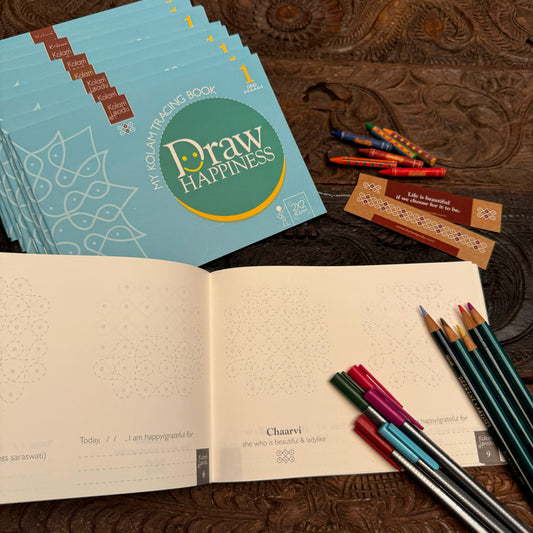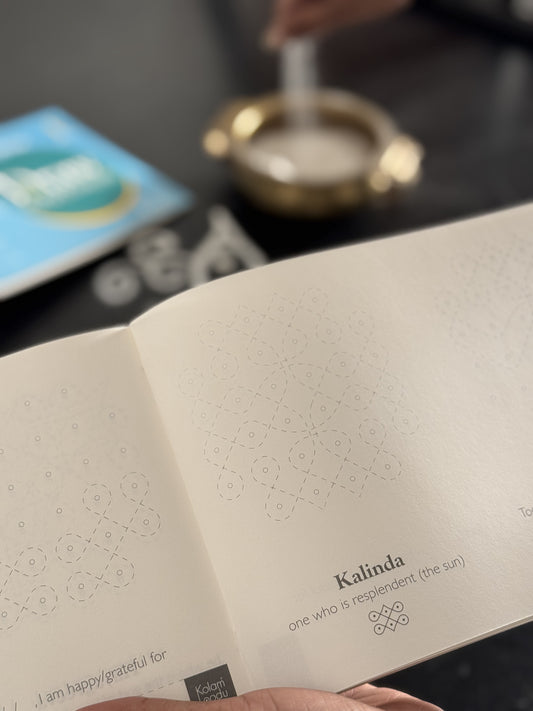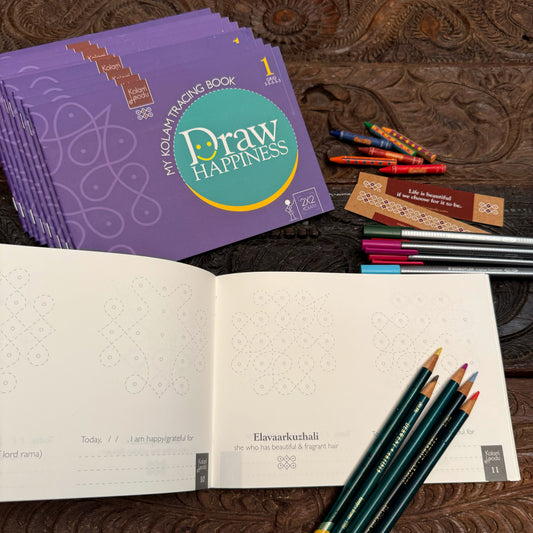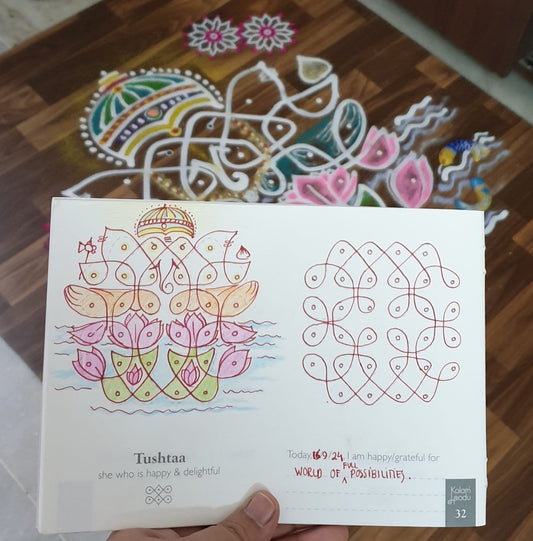Explore the intricate world of kolam, where visual perception takes center stage. From recognizing patterns to mastering spatial awareness, depth, color perception, and attention to detail, visual perception is the key to creating stunning kolam designs. Whether it's a rangoli kolam, muggulu, or rangavali, visual perception enhances the beauty and symmetry of these traditional art forms. Embrace the art of kolam, and let your visual perception skills bloom.
Visual perception plays a crucial role in kolam creation, as it influences how individuals interpret and comprehend visual information. Kolam in Tamil Nadu is muggulu in Andhra Pradesh and Telangana, rangoli in Maharashtra, hase and rangavali in Karnataka, alopana in Bengal, to name a few. Here's how visual perception relates to these traditional art forms:
- Recognizing Patterns: Kolams, whether simple or complex, comprise intricate patterns that require the ability to recognize and interpret visual information accurately. Visual perception skills enable artists to identify and understand the patterns within the kolam design, ensuring they can replicate them precisely and create symmetrical and visually appealing artworks.
- Spatial Awareness: Kolam designs involve the careful arrangement of dots, lines, and shapes, which demands a keen sense of spatial awareness. Visual perception helps artists accurately perceive and understand these spatial relationships, allowing them to visualize how various elements of the kolam fit together harmoniously, maintaining proper alignment, symmetry, and proportion.
- Depth and Perspective: Visual perception also enables artists to perceive depth and perspective within the kolam design. Whether it's a rangoli kolam or muggu, artists can differentiate between foreground and background elements, giving the kolam a sense of three-dimensionality on a two-dimensional surface, enhancing its visual appeal.
- Color Perception: Colors are an essential aspect of kolam, especially in rangoli kolams or rangoli. Visual perception allows artists to perceive and differentiate colors accurately, helping them select and apply colors effectively to achieve color harmonies, contrasts, and balance within the kolam design.
- Attention to Detail: Kolam creation demands meticulous attention to fine details and subtle nuances. Artists must focus on small elements, intricate patterns, and precise connections between dots to create stunning and precise kolam designs. Visual perception aids in maintaining the intricacy and accuracy of the artwork.
- Aesthetics and Appreciation: Visual perception also plays a significant role in perceiving and appreciating the aesthetics of kolam designs. Artists and viewers alike can evaluate and understand the beauty, symmetry, and visual balance of the kolams, fostering a deeper appreciation for these traditional art forms.
In conclusion, visual perception is integral to kolam creation, whether it's a simple kolam, rangoli kolam, muggulu, or muggu. It empowers artists to recognize patterns, grasp spatial relationships, perceive depth and perspective, distinguish colors, pay attention to detail, and appreciate the visual allure of these exquisite art forms.
Life is beautiful if we choose for it to be. Let's draw happiness!







